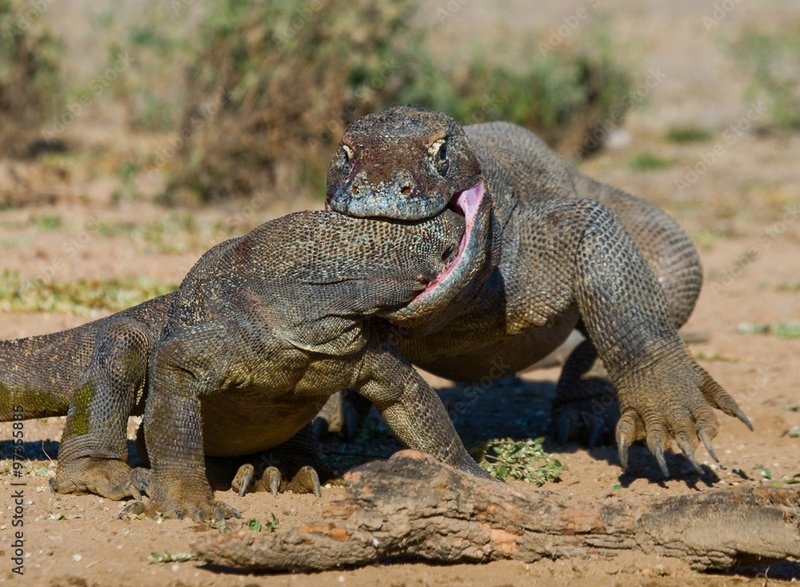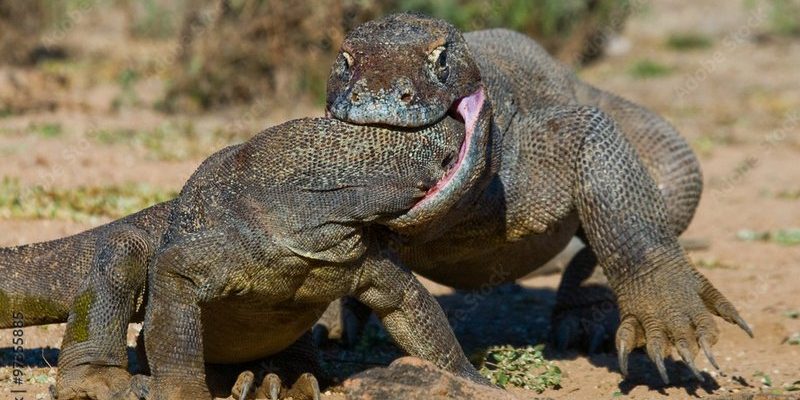
Understanding the Komodo Dragon’s Diet
The Komodo dragon’s diet is truly diverse. They primarily feast on large animals, including deer, wild boar, and even water buffalo. Just picture this massive lizard stealthily stalking a large ungulate, as if it’s a scene straight out of a nature documentary. Here’s a quick overview of what they typically munch on:
- Deer: Their favorite prey, especially the Timor deer.
- Wild boar: Another substantial meal for these giants.
- Carrion: They’re not above scavenging, often eating the remains of dead animals.
- Smaller animals: This includes birds, rodents, and even other reptiles.
Since they can weigh so much, you might think they only hunt big game. But here’s the thing: they also consume smaller creatures whenever the opportunity arises. Their ability to eat a wide range of food helps them thrive in their sometimes harsh environment, much like how we adapt our meals based on what’s in season or available.
How Komodo Dragons Hunt: Stealth and Strategy
Hunting isn’t just about size for the Komodo dragon; it’s also about *stealth and patience*. These reptiles are known for their incredible camouflage. When they’re lying on the ground, their scales blend into the sandy terrain, making it hard for prey to spot them. Imagine a game of hide-and-seek where one player has the ultimate advantage—it’s that effective.
To hunt effectively, they often use a technique known as “ambush hunting.” This means they stay perfectly still and wait for unsuspecting prey to come close. Once they’re in range, the dragon can spring into action with a burst of speed. Although they cannot run for long distances, this initial surge is often enough to close the gap.
The Role of Their Keen Senses
You might wonder how these giant lizards can detect their prey from a distance. Well, it all comes down to their *keen senses*. Komodo dragons have an exceptional sense of smell, which they use to locate animals—even at great distances. They can detect the scent of carrion from miles away, much like how we might catch the whiff of a fresh pizza.
Their forked tongues help them collect scent molecules from the air and transfer them to a special organ in the roof of their mouth. This allows them to get a better idea of where their next meal might be lurking.
How They Deliver a Deadly Bite
Once a Komodo dragon gets close enough to its prey, the real action begins. Their bite is not just dangerous because of their size; it’s also thanks to their bacteria-laden saliva. When they bite, they inflict significant wounds, and while they may appear to have a casual bite, their prey often succumbs to infection.
Some researchers believe that their saliva contains bacteria that can infect the wound, ultimately leading to the prey’s death. Think about it: it’s like having a one-two punch. Not only does the initial bite cause immediate harm, but the follow-up infection ensures that their meal is on its way.
Timing and Patience: Waiting for the Right Moment
Here’s the thing: *timing is everything* when it comes to hunting. A Komodo dragon doesn’t just chase after its meal blindly; it’s all about patience. After delivering a bite, they often let the wounded prey wander off, knowing that it will eventually succumb to the injuries. Then, they track the animal until it becomes too weak to escape.
It’s a level of patience that many predators don’t possess. You could liken it to waiting for that perfect moment to strike in a game of chess—each move calculated and precise.
The Role of Competition in Feeding Habits
With large predators like Komodo dragons roaming the same territory, competition is a real concern when it comes to feeding. You might wonder how they navigate this challenge. Well, *dominance plays a key role*.
Komodo dragons are known to be territorial. They establish a hierarchy based on size and strength, and larger dragons often get first dibs on a kill. In essence, being bigger often means getting fed first. However, they’re also clever enough to take advantage of scavenging opportunities. If a larger dragon is busy with a meal, smaller ones might sneak in for a bite.
In summary, the Komodo dragon is more than just a fearsome creature; it’s a vital part of the ecosystem in which it lives. From their hunting strategies to their unique diet, this majestic reptile showcases the delicate balance of nature. Whether they’re hunting large prey or scavenging opportunistically, they play a significant role in their environment.
So, next time you think of the Komodo dragon, remember that it’s not just about its size and strength. It’s also about how it skillfully navigates its hunting grounds, making it one of nature’s most fascinating predators. Just like us, these incredible dragons have found ways to adapt, survive, and thrive in their world.

